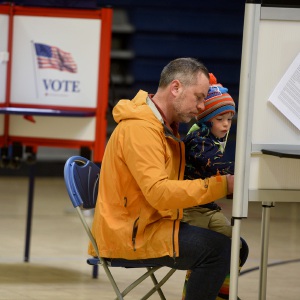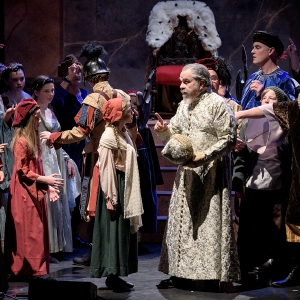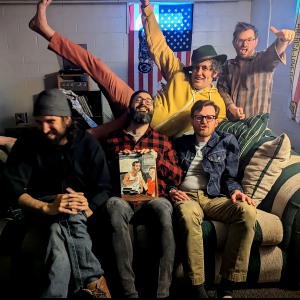Book Review: Two Views of a Bygone Vermont
| Published: 12-15-2017 10:05 PM |
BY ALEX HANSON — VALLEY NEWS STAFF WRITER
For the past decade or so, a slow-moving sense of crisis has crept over Vermont. The features of this crisis are now well known: deaths and crime from opioid abuse, the inexorable aging of the state’s population and accompanying decline in school enrollment, a multi-million-dollar structural budget deficit that greets the Legislature each January.
The state and its residents are trying to address these problems, but they’re not easy ones to solve and it’s hard to tell how successful they’ll be. These seem like dark days for the Green Mountain State.
A different crisis — one that’s been longer in the making and reflects a sense of loss that’s hard to define — is captured in a pair of new books from two of the state’s best known photographers. Since World War II, Vermont has gone from being poor but cussedly independent, to being more solidly middle income, but with a greater disparity between wealth and poverty, much like America at large. Both of these new books are preoccupied in their own way with how the state has changed and what’s been lost.
The Last of the Hill Farms: Echoes of Vermont’s Past, gathers a trove of photographs taken mostly in the Northeast Kingdom, and mostly in the 1970s, by Richard W. Brown. While most of Brown’s earlier work was published in color, this book reproduces his photographs as lush duotones, which gives them the weight of historical documentation.
Where Brown’s book is elegaic, Peter Miller’s Vanishing Vermonters takes a pessimistic view of the state’s present and recent past, and its future. Miller’s book is more text than image, and between his own writing and his transcripts of interviews with Vermonters, many of them aggrieved at the state of their state, the reader is left with the sense that Vermont’s best days are behind it.
Article continues after...
Yesterday's Most Read Articles
 Kenyon: Dartmouth alumni join union-busting effort
Kenyon: Dartmouth alumni join union-busting effort
 Hartford voters approve school budget and building repair bond
Hartford voters approve school budget and building repair bond
 Starbucks store planned for Route 120 at Centerra
Starbucks store planned for Route 120 at Centerra
 Local Roundup: Hanover pitcher throws a perfect game
Local Roundup: Hanover pitcher throws a perfect game
 Parker up for parole more than 2 decades after Dartmouth professor stabbing deaths
Parker up for parole more than 2 decades after Dartmouth professor stabbing deaths
Miller came to Vermont as a boy in 1948 and made a career of photography and writing; he is the author of numerous books, most notably Vermont People, which he borrowed money to publish in the 1990s. He lives in Waterbury, and many of the interviews in his book are with residents of Waterbury and Stowe.
Although Vanishing Vermonters is a downcast look at the state, it’s also a bracing one. Read in its entirety, it’s an ambitious, if scattered and sentimental, examination of how the state’s politics, economics, climate and culture have changed since World War II.
Politics are front and center, if only because so many of the people Miller interviewed rail at state government, the cost of education and the loss of that elusive entity, local control.
“We’ve had positive change, but a lot of negative changes, and to me it’s the lack of ability to be your own person with all the regulation and constraint coming down on us,” says Paul Hannon, a longtime mechanic in East Randolph.
But the book’s most compelling material describes the state’s economic and cultural changes.
Like all pastoral places, Vermont is at the mercy of global forces. The post-war economic boom made it easy for people to relocate to Vermont, and the interstates helped that movement along. Vermont has been slowly losing population since 2013, when U.S. Census data show a high-water mark of 627,140 residents. But it’s worth noting that in 1944, Vermont’s population had bottomed out at around 314,000, with numbers depleted by the war. Population growth is a big driver of economic growth and Vermont was caught up in the boom years. The state’s small size has made the state government more important as a brake on forces that might have overwhelmed Vermont with development.
While Miller’s interview subjects — who range from former Gov. Howard Dean to a climate scientist to a family that owns a sawmill and a couple who own one of the state’s best breweries — often refer to a loss of community spirit, they seldom, or only glancingly, mention that Vermont has only a measure of control in a global economy. In the 1990s and 2000s, for example, the prices of real estate began to skyrocket as people flush with stock market gains began to look for other assets in which to park their money.
Reed Garfield, a Lyndonville resident and self-described conservative who had a long career in newspaper production in St. Johnsbury, keeps to a conservative line, but sounds like a Marxist when he describes the effects of global capital on his home state.
“But when I retired in 2006, I wrote a letter to the editor because I was really caught in the cost of living, as we’re not making a living wage anymore because the investors have all the money and the working people don’t have much of anything,” he tells Miller.
It used to be easier to be poor in Vermont, to be self-reliant, to raise kids and livestock and put up food and firewood for the winter. The cost of land and housing has made subsistence living more difficult without some kind of outside income.
And yet Vermont now has a more diversified economy, and the people who are building businesses seem pretty happy with their lot. Jen and John Kimmich, founders of The Alchemist, the award-winning brewer of Heady Topper, recognize that Vermonters are struggling and are doing their part to help out, with a foundation that pays for education and apprenticeships for Vermont students. Vermont has a booming food economy that can’t always find enough workers (in part because housing costs have outstripped wage growth). They are among the people in the book who understand the global pressures their small state faces.
“It’s just that I feel like the economic system is broke for our country,” says Jen Kimmich. “Our wealthy people are not paying enough. The offshore investments are shameless when we need that money for low-income policies. I would rather pay more taxes and know that everyone, not just our employees, has access to good health care, good education and affordable housing. Everyone deserves that.”
Although Miller’s book contains photographs, at times they seem either beside the point or to run counter to the narrative. As Miller has framed them, these people are vital, moving ahead with their lives, regardless of whether they’re complaining about the state Legislature, and many of them are adapting to changing conditions.
Stub Earle, of Eden, a centrist Republican former state lawmaker, was struggling as a farmer back in the late 1990s. He took some of his mother’s old recipes and started making pickles. He sold them to stores, but then started taking them to campgrounds and selling them out of his Subaru. That’s as much the Vermont way as anything else.
As the state started to change, thanks to its influx of new residents and money, there was a sweet spot, in the 1970s. New arrivals were starting to make a difference, but hadn’t yet altered the state’s thrifty, hard-working, hard-bitten character. Richard W. Brown, who settled in Peacham in 1971, was there to capture it. The title of his new book acknowledges that the people and occupations of those days have faded in the intervening years. This record of it is a fitting memorial.
Most viewers probably know Brown for his color photographs. He carried a matching pair of Nikons and photographed on Kodachrome for magazines and books. But he also carried an 8-by-10 view camera, which creates huge, richly detailed negatives. Last of the Hill Farms is full of these images and many of them are sublime.
Brown has an extraordinary ability to catch the qualities that define Vermont, or that Vermonters want to be defined by: stubbornness, love for the land, independence, warmth, humility, perseverance.
More so than Miller’s, Brown’s shutter opens on the state’s more pastoral qualities. Trained in art history at Harvard, Brown seems more attuned to the ancient relationships among people, land, animals and crops, and the work required to sustain them. All pastoral art and literature has an elegaic quality, and with the passing of time, that quality only deepens.
In the early 1970s, some places in Vermont had only just gotten electricity, and many people, notably Theron Boyd, who lived his whole life in a Quechee farmhouse without wiring or plumbing, chose to do without it.
Boyd gets his own section in Brown’s book, which is meant as a record of its time. Brown mixes homely details with grand landscapes, titling a photograph of a farmhouse and barn, mountains in sun and shadow and a gibbous moon Tire Swing, after the image’s smallest and most humble detail.
Some of the people seem awfully well-worn, and the first section of the book is titled “The Survivors.” It’s easy to forget that after the Civil War the Vermont countryside emptied out, with residents flocking to industrial jobs and to more forgiving farmland in the Midwest. People who were still there in the mid-20th century had hung on, Brown writes, “with a quiet but fierce attachment. They faced my camera lens without pretense, with characteristic forbearance and rough-hewn dignity.”
It’s hard to know which is worse, Miller’s anguished cries that the soul of Vermont is disappearing, or Brown’s straightforward acknowledgment that it’s gone, or at least a part of it is. Vermont is always changing and always will be, but it seems safe to say that there’s a spirit that will live on as long as there are people who remember it and stay true to it.
“Vermont has changed a lot in my life and isn’t perfect,” Alex Sparks, a dog trainer in Addison tells Miller. “What place hasn’t changed and is perfect? I really wish more people were not struggling financially in Vermont, but it seems like change is inevitable and unfortunately some folks get left out. I don’t have the answer.”
Richard W. Brown will talk about his work and sign copies of
For more information about, or to order
Alex Hanson can be reached at ahanson@vnews.com or 603-727-3207.

 Art Notes: After losing primary venues, JAG Productions persists
Art Notes: After losing primary venues, JAG Productions persists  Over Easy: Marvels in the heavens, and in the yard
Over Easy: Marvels in the heavens, and in the yard  Amid financial difficulties, Lebanon-based Revels North cancels midwinter show
Amid financial difficulties, Lebanon-based Revels North cancels midwinter show  Art Notes: The Pilgrims to perform ‘last’ show Saturday in Hanover
Art Notes: The Pilgrims to perform ‘last’ show Saturday in Hanover
